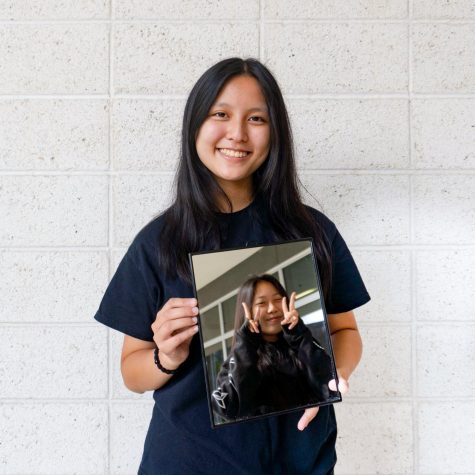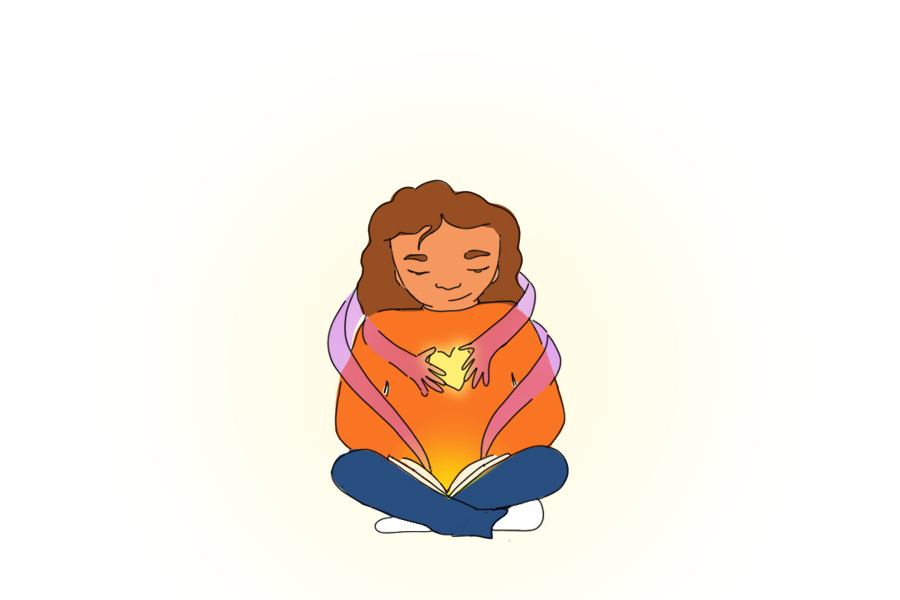A ‘Love Letter’ to Poetry
From haikus to free verse, poetry has the ability to touch our hearts by directly addressing the emotions that are difficult to properly explain.
Like satin, the syllables slip off of structured stanzas, stumbling then settling into the softened recesses of my heart. I swallow, and then this art, this poem, plummets, like stone, like a cherry pit, into the round of my stomach. This is it: what we have lost to the ground, what we must tend to tree — poetry.
The first poem that I ever fell in love with was Edgar Allan Poe’s “The Raven,” whose oft quoted phrase “nevermore” seems to resonate with Americans; as in, “nevermore” will people willingly peruse poetry. At the peak of poetry’s popularity in 2017, only about 28 million Americans, or 11.7% of the population, reported that they had read a poem within the last year, according to the Survey of Public Participation in the Arts.
It is ironic. As humans, we are constantly trying to reconcile with the fact that some feelings cannot be conveyed cleanly, and yet we shy away from an artform that is predicated on extracting emotion from the everyday and translating it onto paper so that it becomes tangible. As writer Audre Lorde states, “The farthest external horizons of our hopes and fears are cobbled by our poems, carved from the rock experiences of our daily lives.”
In between lines and broken by caesuras, poets can transform heavy topics of love and loss into digestible packages that are not only understood but also felt. We experienced this on Jan. 20 when Amanda Gorman recited “The Hill We Climb” — a poem of hope — to a nation on the brink, a nation divided. We stretched our ears, we downed her words and when the poem was published as its own book on March 30, we propelled it to the top of the New York Times Best Seller list.
We needed poetry to remind us of what we could be “if only we’re brave enough,” as Gorman would say.
And yes, poems are ambiguous at times, but it is interpretation that lends itself to meaning. Everything, from capitalization to punctuation marks, can be picked apart and thrown together, but in the end, it is up to you to find what you need. In “Fever 103°,” Sylvia Plath asks, “Pure? What does it mean?” For you, I cannot say.
Some poets ignore grammar convention as Sonia Sanchez does in “Love Song No. 3” when she cries how “theyonlygonseeherwhitebonesstretchedout / againsttheskynobodygonrememberher.” Others follow stricter forms as Samuel Taylor Coleridge does in his sonnet “Work Without Hope” which ends with “Work without Hope draws nectar in a sieve, / And Hope without an object cannot live.”
Poems are not pretentious artifacts to be flaunted at your local coffee shop, even if it is easy to think of them as such. They are confessions, and since each one bears the fingerprint of the poet who wrote it, there are no rules as to how they should be created.
Regardless of their shape, poems are all reflections of the human desire to feel. Nathalie Handal in her piece “Love Letter” put it best: “I’d like to be a poem, to reach your heart and stay.”
So let it stay.
Your donation will support the student journalists of Portola High School. Your contribution will allow us to purchase equipment and cover our annual website hosting costs.

Charlotte Cao is the Features Editor for her third and, unfortunately, final year on the Pilot. Whether it be through the co-writing of stories or during...

Kelthie Truong is a Co-Managing Editor for the 2020-21 school year, her second and final year with the Pilot. When she’s not in the newsroom, you can...




